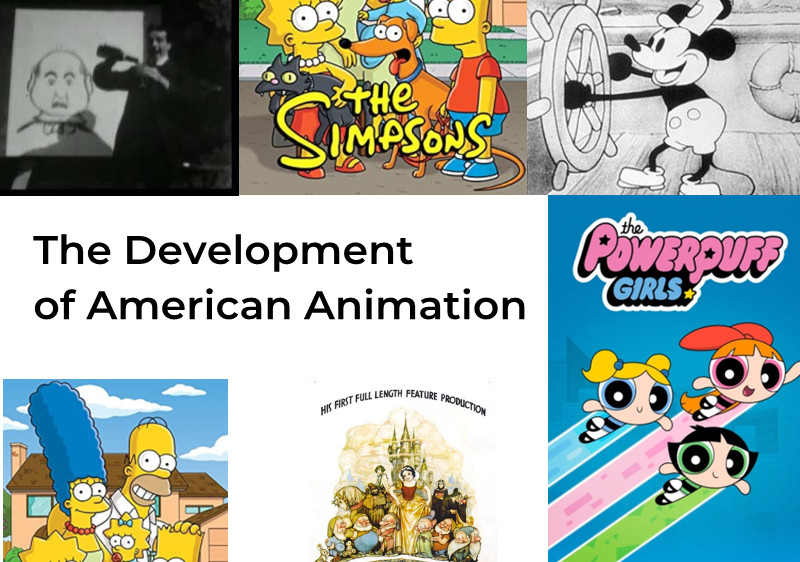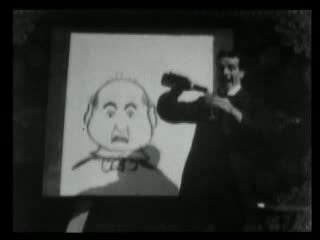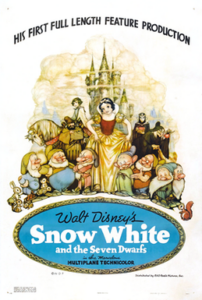The Development of American Animation in Different Era

From childhood to adulthood, we have to watch more animation. Even some very classic animations that we've been watching over and over until now.
But how much do you know about the evolution and development of American animation?
If you only know the name of the animation or the characters in it, then you must not miss today's article.
History of American Animation
In the early 1900s, Enchanted Drawing was the first animated sequence, and the Humorous film Phases of Funny Faces was the first animated film in the United States. In the United States, J. Stuart Blackton is revered as "the founder of animation."
Enchanted Drawing, a silent film directed by Mr. Blackton, is significant for being the first film to have animated scenes recorded on regular picture film.

Producing "cartoons," or animated short films, for exhibition in cinema theatres became a specific business in the 1910s. It was generally agreed that John Randolph Bray was the most successful producer then.
The cel animation technique, which Bray and animator Earl Hurd developed, was the standard in the animation business for the remainder of the decade. The introduction of the cel animation method was a significant development in traditional animation since it allowed the recycling of previously animated elements from one frame to the next.
Animation Before Film
In the 18th and 19th centuries, when the Industrial Revolution swept Europe and North America, people began experimenting with devices that might make still pictures seem in motion.
From Pre-film era Animation Experiments to Early Film: An Introduction
Animation's foundational concepts are based on the same idea as cinema itself: the human brain's skewed understanding of motion, which may be used to create the impression of motion when none exists.
Humans have known about and entertained themselves with this anatomical quirk for generations. Once the book's page is flicked rapidly, the images begin to change as if they've come to life. Which may make even a sketch of a succession of drawings scribbled on the edges of individual pages seem like a work of magic.
However, the English photographer Eadweard Muybridge (1830-1904), best known for his pioneering work in motion capture, might be considered the actual progenitor of animation; he first documented whole sequences of movement in real life using numerous cameras.
Real-time animation, based on theatres, comprises "Motion Capture," in which the movement is made by a genuine actor and translated via sensors—as with Gollum in Peter Jackson's The Lord of the Rings (2001)—and "Rotoscoping," in which cameras are filming a genuine gesture, such as in the case of the aforementioned "Lord of the Rings" trilogy.
The Golden Era of American Animation
 When it comes to the film industry, it's hard to find a name more synonymous with success than Walt Disney Productions. Walter Elias Disney and his brother Roy relocated to Hollywood and established the first Disney studio. To many, Walt Disney is almost indistinguishable from the animation itself.
When it comes to the film industry, it's hard to find a name more synonymous with success than Walt Disney Productions. Walter Elias Disney and his brother Roy relocated to Hollywood and established the first Disney studio. To many, Walt Disney is almost indistinguishable from the animation itself.
Snow White and the Seven Dwarfs (1937) was the first full-length animated film, and the rotoscoping process made it; the movie won eight Academy Awards. However, some commentators have argued that Mickey Mouse (1928) is more noteworthy because of Mickey himself.
Disney's influence on the industry as a whole, however, cannot be denied. Disney was an early adopter of several now-standard techniques and technologies in producing animated films, including Technicolor and the multiplane motion picture camera.
Although they were developed for classic hand-drawn animation, Disney's "Twelve Basic Principles of Animation" are still widely used in the industry. Every animator worth their salt should be acquainted with them.
Since Walt Disney was a noted perfectionist who focused his business model on his relationships with his staff, the Disney animation studio has maintained its position as the industry leader for decades.
After a long period of development, American animations have formed distinct characteristics. The animated characters they created have left a lasting impression all over the world. With the continuous development of animation, people's love for animation is not only reflected in repeated viewing, some people will personalize objects such as custom keychains to express their affection.
American animation occupies a very important position in the world of animation history, and has been leading the development direction and trend.
Image Source:
Enchanted Drawing-https://en.wikipedia.org/wiki/The_Enchanted_Drawing
The Simpsons-https://www.imdb.com/
The Powerpuff Girls -https://www.imdb.com/
Snow White and the Seven Dwarfs-https://en.wikipedia.org/wiki/Snow_White_and_the_Seven_Dwarfs
Mickey Mouse-https://en.wikipedia.org/wiki/Mickey_Mouse
